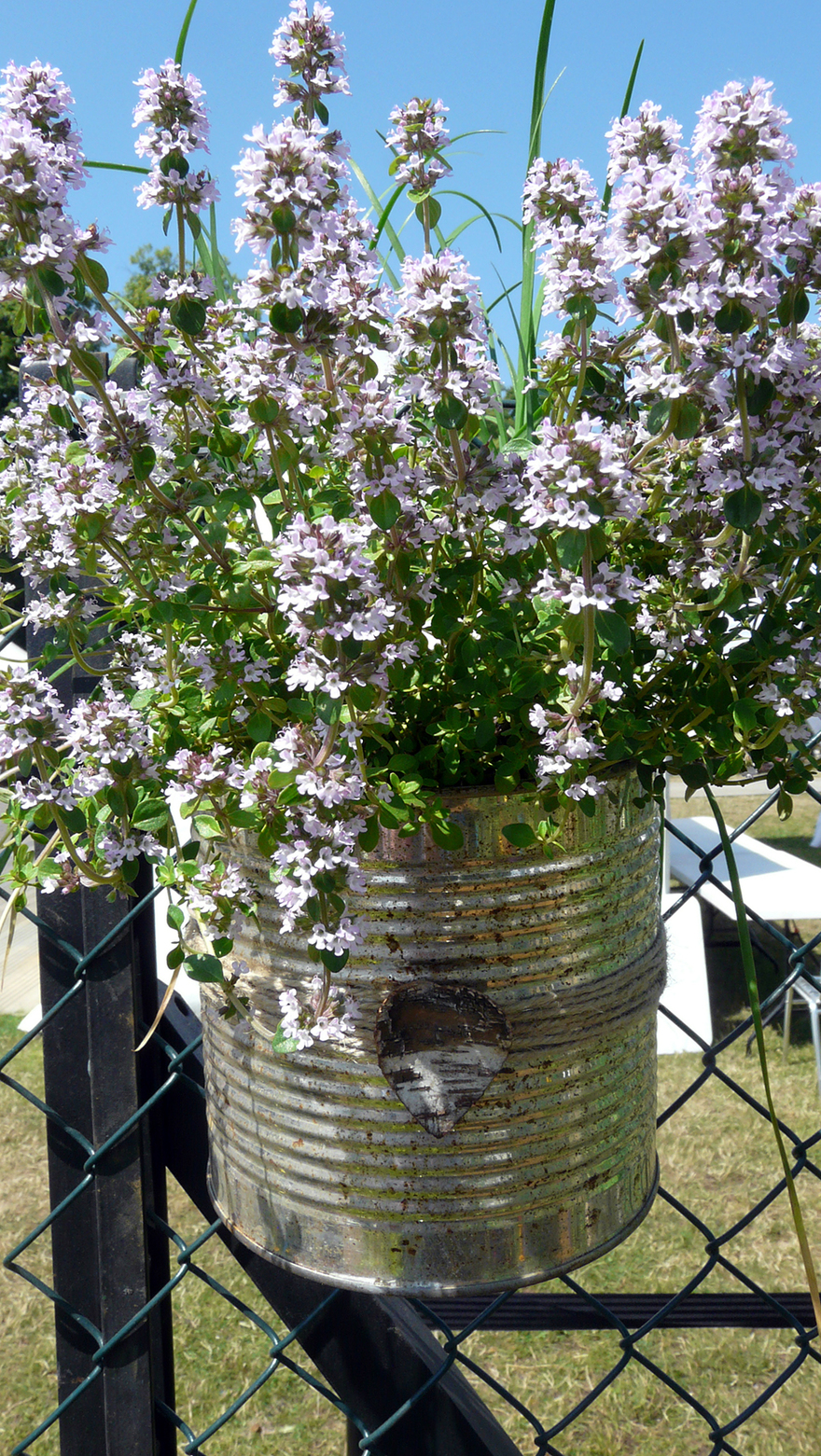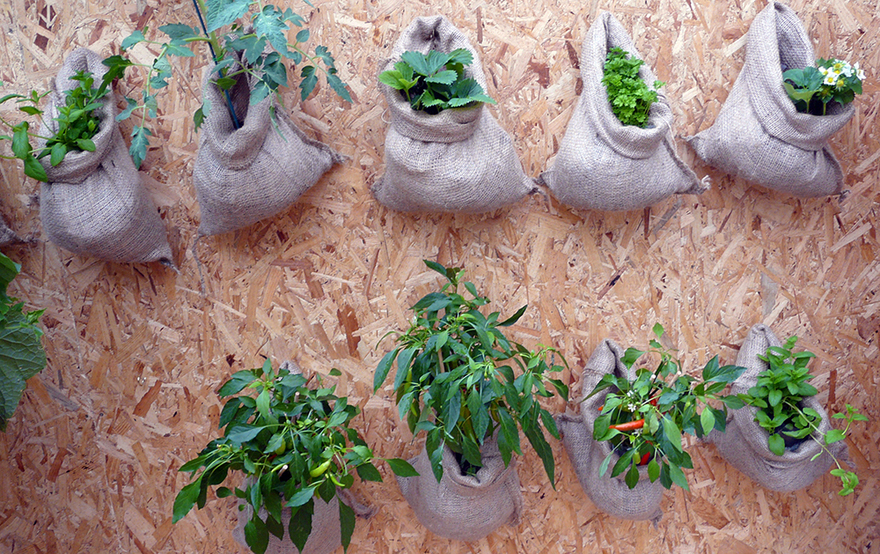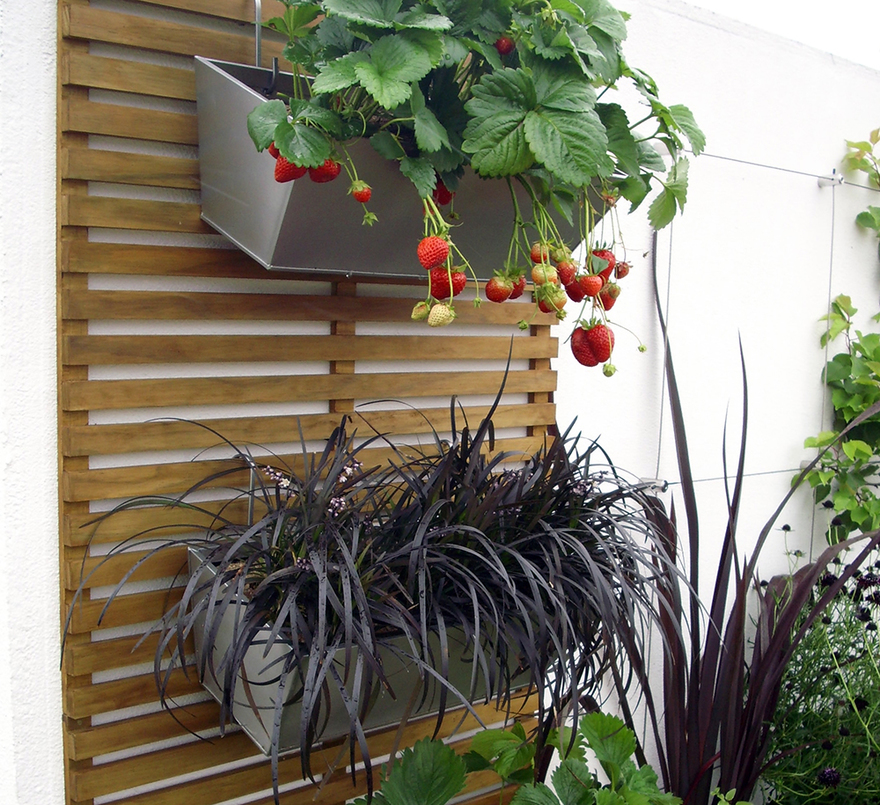Ben Vanheem offers more inspiration for great hanging pots and containers.
Make an upside-down planter

Photo: kkimpel
Home-made upside-down planters are an incredibly fun way to pack in more vegetables for very little effort and cost. The easiest way to make an upside-down planter is to drill planting hole/s into the bottoms and sides of large buckets. Sometimes sold as ‘plasterers mixing buckets’, look for sturdy buckets with a minimum capacity of 25 litres. They’ll need to have a strong handle, though you can always add your own hanging basket-style chains if not. These types of planters are ideal for tomatoes and strawberries, as well as beans, peas, peppers and cucumbers.
To make one, begin by drilling your holes. Larger plants such as tomatoes should be planted one per planter, so cut a 4cm (1.5in) hole right in the middle of the base. You can get three to four strawberries or peppers into a container like this, so cut out three holes in the sides then one in the base. Or make up to eight holes if you’re growing peas or beans. Due to the final weight, it’s easiest to work on your planter while in its final position. Attach very sturdy hooks capable of supporting the weight of a planter heavy with luscious plants, compost and water.
Planting up is much like a hanging basket. Plants are either fed out of the holes from the inside out, or the rootballs are gently pushed through the holes to the inside – whichever causes the least disturbance to the plants. Feed in the compost around the roots as you fill the planter, firming it in in stages until your reach a few centimetres from the top. You can plant the top with salads, leafy herbs, shallow-rooted carrots or perhaps some pretty edible flowers such as nasturtium or calendula. Or if your bucket came with a lid you may like to simply click this back into position to reduce moisture loss from the compost.
Off the wall!
Brighten up a blank wall or fence with one of these clever – and quirky – ideas for packing in the produce!

Tin pot thyme: Repurpose old food tins. Line with polythene to prevent contamination then drill holes right through the base for drainage. Hang from a fence or screw to a wall. You can paint or accessorise the outside of the tin to give a handsome finish.

Sack race: Lead the charge to a vertical wall of wonder with this clever idea. Sturdy hessian sacks are attached to walls and serve as rustic sleeves disguising plastic pots brimming with herbs, chillies and strawberries. This is a great solution for a warm, sun-facing wall.

Hanging in there: An easy way to turn standard troughs or window boxes into hanging planters is to drill holes into one side to accommodate supporting hooks or screws. This simple setup livens up a plain wall with a vertical trellis onto which the troughs are hung.





